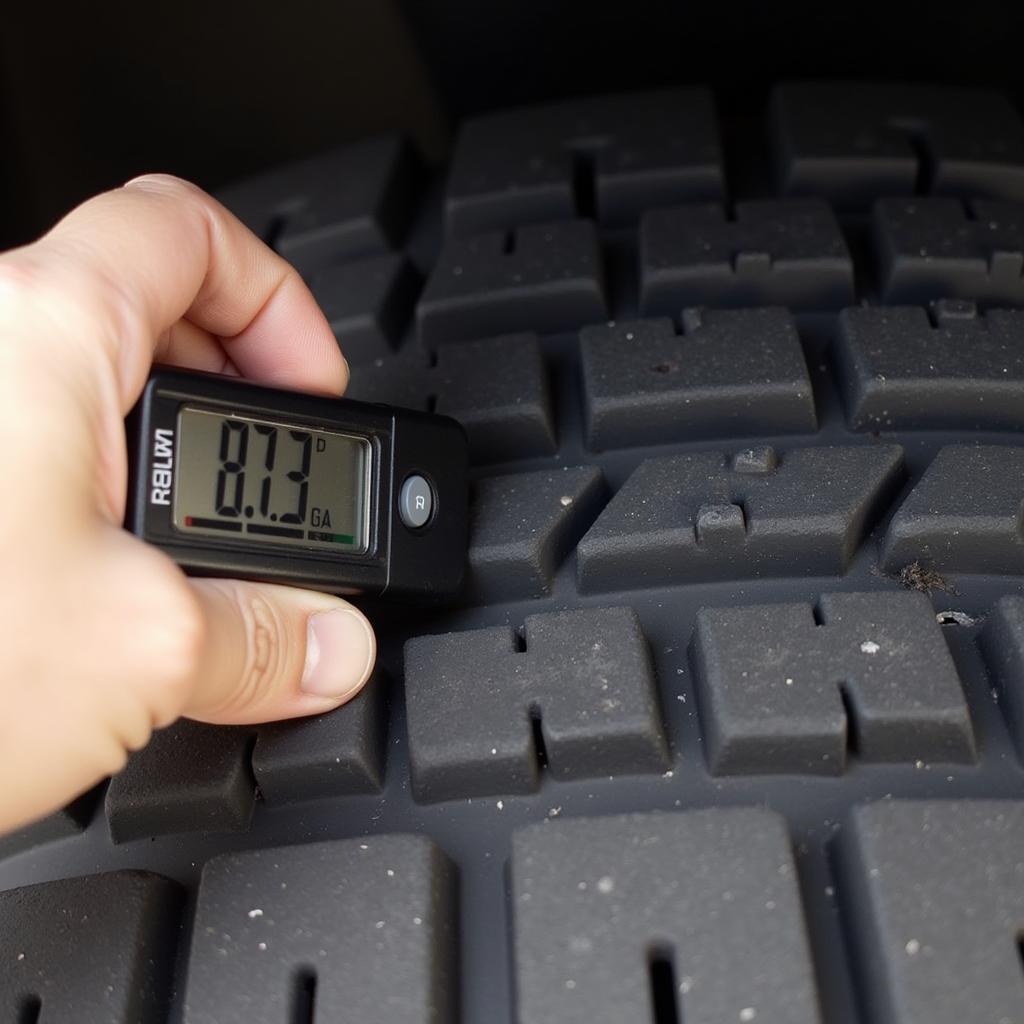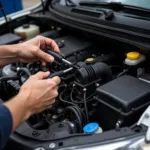You just had your tires rotated, a standard car maintenance procedure, and now your tire pressure light is on. Don’t panic! This is a surprisingly common occurrence. While it might seem alarming, the issue is often easily resolved and doesn’t necessarily signify a serious problem. Let’s explore the reasons behind this phenomenon and guide you on how to address it.
Why Does My Tire Pressure Light Come on After a Tire Rotation?
The most likely culprit when your tire pressure light illuminates after a rotation is simply that your tires are actually low on air. Tire pressure naturally fluctuates with changes in temperature and driving conditions. It’s possible that your tires were already nearing the low-pressure threshold before the rotation, and the process itself brought the issue to light, quite literally.
Another possibility is that the technician who rotated your tires slightly overinflated or underinflated one or more tires during the process. This is usually unintentional and can occur during the refilling process after the rotation.
How to Address a Tire Pressure Light After Rotation
Here are the steps you should take if your tire pressure light comes on after a tire rotation:
-
Check Your Tire Pressure: Use a reliable tire pressure gauge to check the pressure in all four tires. Don’t rely solely on visual inspection, as a tire can be significantly underinflated without appearing flat.
-
Consult Your Owner’s Manual: Your vehicle’s owner’s manual will specify the recommended tire pressure for your specific make and model. This information is often located on a sticker inside the driver’s side doorjamb as well.
-
Adjust Tire Pressure as Needed: Inflate or deflate your tires to match the recommended pressure. If you’re unsure how to do this, most gas stations have air pumps available for public use.
-
Reset Your TPMS (Tire Pressure Monitoring System): Most modern vehicles have a TPMS that automatically monitors tire pressure. Once you’ve adjusted your tire pressure, you’ll need to reset the system. The process for this varies by vehicle, so consult your owner’s manual for instructions.
-
Observe and Reassess: After resetting your TPMS, keep an eye on your tire pressure light. If it stays off, you’ve likely solved the problem. If the light returns, you may have a slow leak or another issue that requires further investigation by a qualified mechanic.
When to Seek Professional Help
While a tire pressure light after rotation is often a simple fix, there are times when seeking professional help is warranted.
-
Persistent Light: If the light returns after you’ve checked and adjusted your tire pressure, it’s best to consult a mechanic to rule out a slow leak or a problem with your TPMS.
-
Unusual Tire Wear: Uneven tire wear patterns after a rotation could indicate a problem with your vehicle’s alignment or suspension, which a mechanic can diagnose and address.
Expert Insight
“It’s important to remember that tire pressure impacts not only your vehicle’s safety but also its fuel efficiency and tire lifespan,” says John Smith, Senior Automotive Technician at XYZ Auto Repair. “Regularly checking your tire pressure, especially after a rotation, is a simple yet crucial aspect of car maintenance.”
By following these guidelines, you can confidently address the issue of a tire pressure light illuminating after tire rotation and ensure a safe and smooth driving experience.



